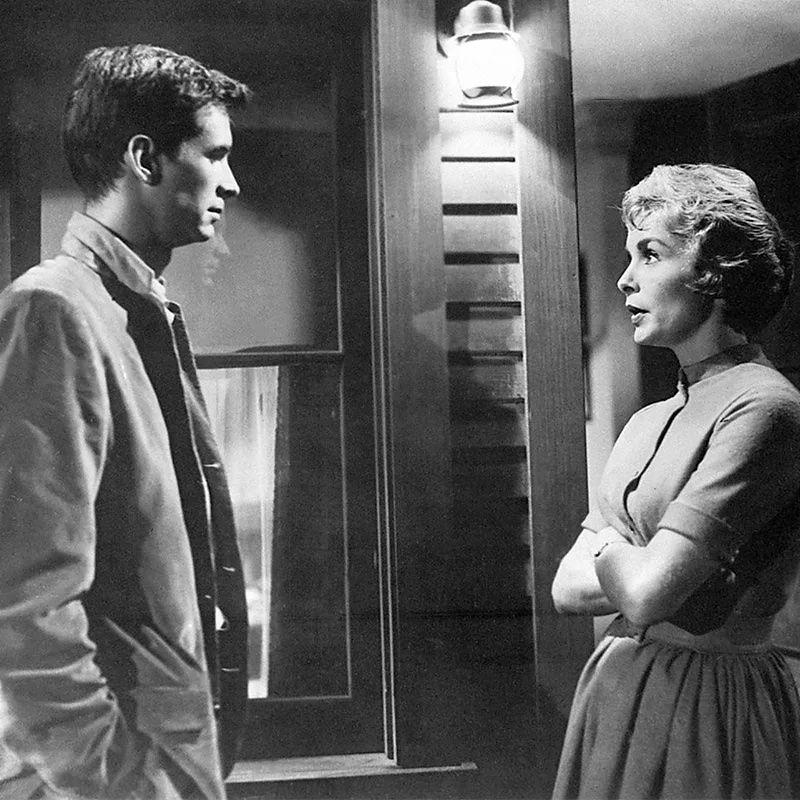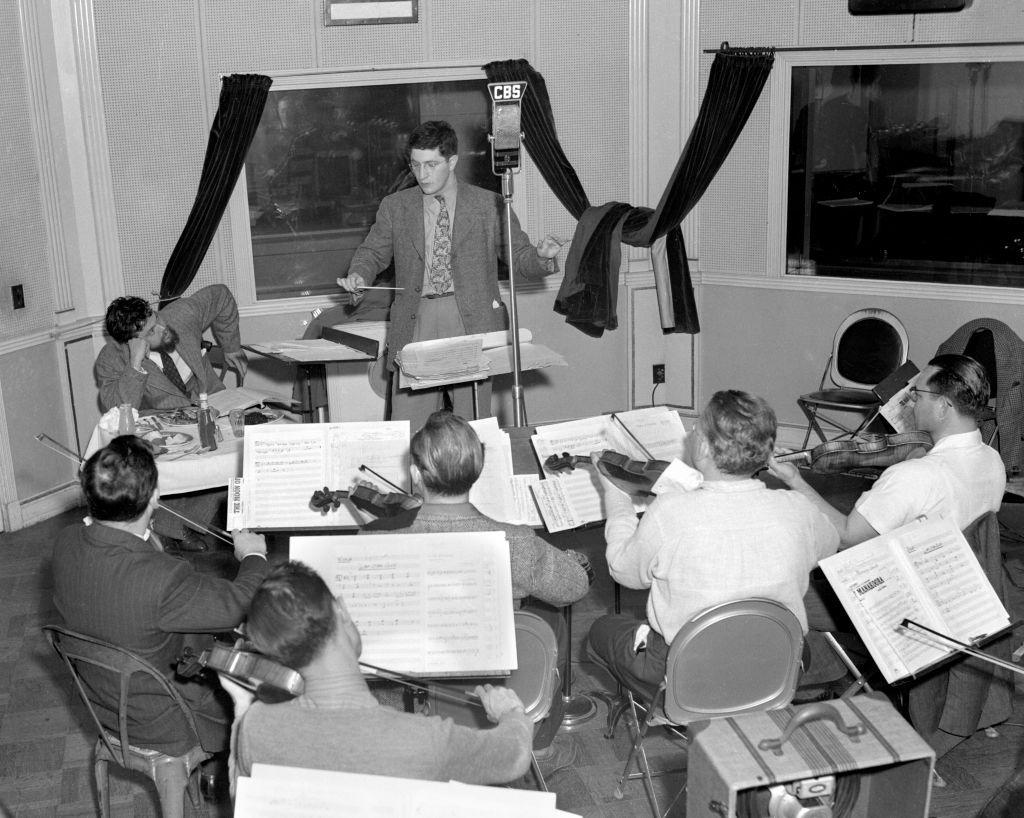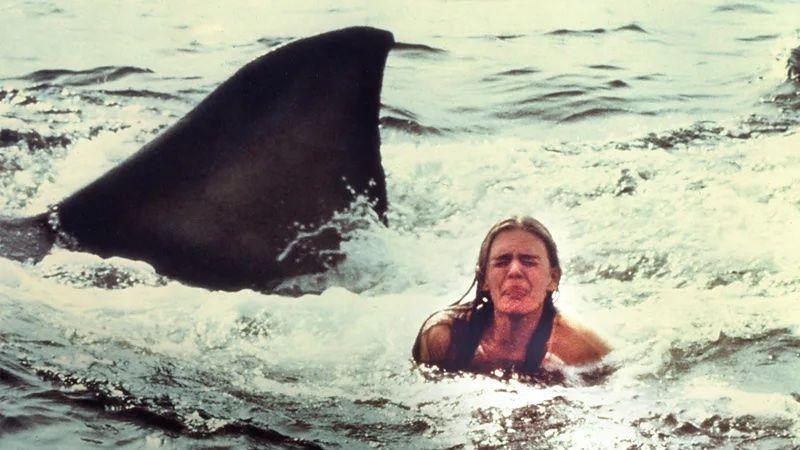Loud violas that sound as if coming from a slaughterhouse. Deep, booming notes that slowly decrease in speed and seem to imitate the fluctuating heartbeats of a victim.
If we remove the
Soundtrack
composed by Bernard Herrmann for the
horror movie
Psychosis
— which turns 65 this month — it is fair to say that it would not have the same distressing impact.
Particularly important is the music that plays when Marion Crane (Janet Leigh), shortly after checking into the Bates motel, is attacked from behind the shower curtain by a mysterious killer — who later turns out to be the motel owner, Norman Bates (Anthony Perkins), dressed as his deceased mother.
“that song is everything,” says Rachel Zeffira, composer of film soundtracks and member of the folk duo Cat’s Eyes.
They are the birds, the bees, and the voices in the back of your head.
O
the director’s Alfred Hitchcock project seemed doomed to failure
from the beginning, with Paramount executives (who had produced five previous Hitchcock films) showing little interest, not allowing him to film in their studios and limiting themselves to distributing the film instead of producing it.
But despite the modest budget,
Hitchcock proved that everyone was wrong
, and he owes this, in part, to Herrmann and his talent for creating compositions that raise the scenes to a new level.
Psychosis
“Surely it wasn’t a bad movie before the soundtrack, but it lacked tension,” explains Steve Smith, author of the new book.
Hitchcock and Herrmann: The Friendship and Film Scores that Changed Cinema (
Hitchcock and Herrmann: the friendship and the soundtracks that changed cinema
,
(translation into Portuguese)

Herrmann gave the film the push it needed by composing a score for an orchestra of 50 musicians using only strings.
In the case of the most famous scene, this resulted in a sequence of psychologically disturbing moments, which made the terrified audience stop seeing the shower as a safe place.
Before the shower scene, many of the musical tracks had a depressive tone and were not really that high,” says Smith. “But suddenly, with the shower scene, the strings play without muffling and scream in an animal-like way. This creates a clever connection with Norman Bates, the bird taxidermist.
Herrmann forced Hitchcock, initially indifferent, to watch the shower scene with and without the music.
We should use it!” agreed Hitchcock. “But I thought you didn’t want my music here,” said Herrmann sarcastically, before the director retorted: “My dear, an inappropriate suggestion.
It’s a joke that reflects well this explosive partnership.
The creative union of the two resulted in soundtracks that make the viewer feel immersed in the dark inner dialogue of a character, complicit both in their most romantic dreams and their most desperate nightmares (see
A fallen body
)
Zeffira describes the music that plays every time Norman Bates appears on screen as “depressed and anxious,” which, according to her, “makes you feel sorry for a killer.”
I know that before composing a score for a movie, Herrmann always read the novel on which the film was based or studied the literary work, so his scores were more empathetic. Each note Herrmann played had a meaning.
The origins of genius Herrmann
An avid reader in his childhood, Herrmann (or Benny, as he was called by his friends) spent most of his free time passionately debating whether literature or music was the supreme form of art.
The music ended up winning, and Herrmann began to win classical music competitions at the age of 13.
He studied at New York University, under the guidance of the legendary composer Percy Grainger, and one of Herrmann’s first professional jobs as a studio musician was at CBS radio.
At CBS, he worked with
Orson Welles
, winning your trust with the radio adaptation of
The War of the Worlds
, in 1938, which was so realistic that some listeners believed it was a real alien invasion.
He ended up becoming the most obvious choice for
score the soundtrack of
Citizen Kane
,
masterpiece by Welles released in 1941.
Working with hundreds of radio pieces taught Herrmann how to create compositions that evoked mental images, as well as showed him the power of long pauses: he used silence as another instrument to build suspense.

Professionally, Herrmann was known for having an explosive temperament, and, as his daughter Dorothy told the New York Times, he “had no patience for fools.”
Still, Smith emphasizes that the musician was less temperamental than his reputation suggested, and often recommended younger composers for projects. “He was misunderstood,” he says.
Given his reputation for getting easily irritated, I think people would be surprised at how kind Bernard was, especially with animals. He was suspicious of arrogant humans, but gave unconditional love to his cats.
Brandon Brown, a cinematographer who lives in South Carolina and is working on a documentary about Herrmann’s life, says that one of the things often forgotten are the horrors of the time in which Herrmann grew up.
Although he was born in the city of New York in 1911, Herrmann’s family was of Russian Jews who fled Eastern Europe in search of a better life. They certainly had to leave behind friends in Ukraine, who were later forcibly displaced or massacred by the invasion of
Nazi troops.
It is possible to hear Herrmann’s work for radio and cinema, especially in the works produced during the
World War II
“how deeply he was affected by what was happening,” says Brown, citing the song he composed for the supernatural drama.
The Passionate Ghost
, from 1947.
In the play
The Spring Sea
, there is a growing harmony of flutes that represents the revitalizing song of birds in the morning. However, the sunny tones are permeated by a melancholic sadness, thanks to descending strings that sound more like the cry of a mother.
Herrmann considered
The Passionate Ghost
Your best work,” says Brown. “It’s easy to understand why. It’s such a beautiful and melancholic track at the same time, capturing how the world felt in the 1940s, a time when even a sunny day was haunted by ghosts. It was this dark tone that he carried into
Psychosis
.”

In 1960, Herrmann was already a giant in the film industry. Moreover, he and Hitchcock had already made five films together (
The Third Shot, The Man Who Knew Too Much, The False Accused, A Falling Body
e
International Intrigue
, and developed an impeccable creative chemistry.
Still, Smith believes that
Psychosis
It was a production in which Herrmann gave a new breath of life to a tired director. “Hitch was afraid he had made a mistake by filming such a macabre material, something many advised him not to do,” explains.
Mas Herrmann made Hitchcock fall in love with the project again. Herrmann later said that he wrote the soundtrack for
Psychosis
for a string orchestra, in order to create “a black and white sound” that complemented the black and white photography.
In addition to transforming
Psychosis
It was a huge success for Hitchcock — earning 32 million dollars with a budget of only 800 thousand — Herrmann saw his soundtrack generate unexpected repercussions in popular culture. The producer George Martin based his 1966 string arrangement on
Eleanor Rigby
, the Beatles, in the music of
Psychosis
.
“George wanted to bring a bit of drama to the arrangement,” Paul McCartney told the BBC in an interview.
The legacy of the soundtrack
The central theme of the film would later be reused by dozens of other artists. Perhaps the most exciting example is the 1998 single by rapper Busta Rhymes,
Gimme Some More.
According to hip hop producer and contemporary classical music composer Michael Vincent Waller, the soundtrack of
Psychosis
She is loved by rap artists.
Herrmann knew how to repeat small fragments and become a master of repetition. In many ways, the way he led music into cinema resembled very much the way rap producers make their
beats
.”
Waller states that
Psychosis
Not only did the genre of horror change, but it also expanded the cinematic narrative as a whole.
The music of
Psychosis
It is a reference every time you want to build tension, and of course John Williams was inspired by it for the low, threatening notes of
Shark
. Whenever you hear scary violins in a horror movie, or feel that the soundtrack has become almost a separate character, all of this refers to
Psychosis
.”

The creative partnership between Hitchcock and Herrmann came to an end in
Torn Curtain
(1966).
Hitchcock was furious with Herrmann’s refusal to follow his orders to produce a more streamlined score with pop appeal — the composer insisted on using 12 flutes, 16 trumpets, nine trombones, two tubas, eight cellos, eight double basses and two sets of timpani.
Herrmann was fired, but this did not harm his career. He continued to be an innovative force until his death in 1975, when he suffered a heart attack.
In particular, a collaboration with Martin Scorsese for
Taxi Driver —
released a year later, in 1976, it consolidated Herrmann’s musical legacy.
Working mainly with a saxophonist (Ronnie Lang), he composed smoky and floating jazz notes, so vivid that one could imagine the pollution rising through the cracks of Manhattan’s sewers.
Scorsese’s film also offers a moment of full cycle with
Psychosis
: at the end
Taxi Driver
, Herrmann makes a direct quote to the theme of three notes from the previous film, The Madhouse.
“He told his wife, Norma, that he did it because he wanted to tell the public that Travis Bickle, from
Taxi Driver
“, I would commit violence again,” explains Smith.
Among Herrmann’s exceptional works, the soundtrack of
Psychosis
and its scratched and anguished violin arrangements remain an obvious highlight. It is one of the few tracks that Herrmann re-recorded, a clear sign of pride, and it continues to be a perfect example of how music can elevate a film. Or, as Herrmann himself once said:
A composer writes the soundtrack for a movie and gives it life. Like a person who goes to the doctor and says ‘I’m dying,’ and the doctor cures him.
Read it
original version of this report
(in English) on the site
BBC Culture
.
- “Requiem for a Dream”: why the film that addresses the dark side of the American dream is still controversial 25 years after its release
- “Apocalypse Now”: the story behind the most violent filming in the history of cinema
- How did Superman emerge as a “violent socialist” rebel and become the standard American hero